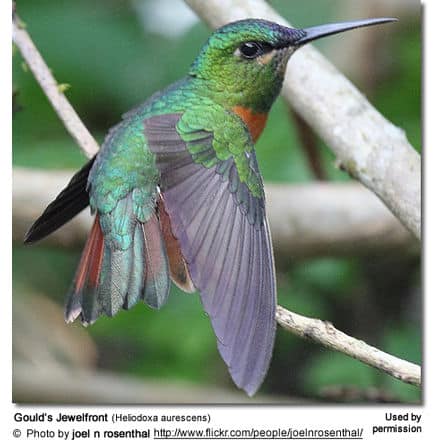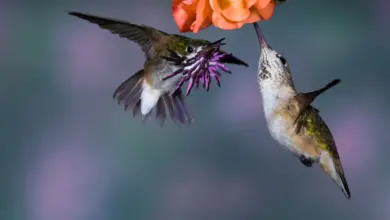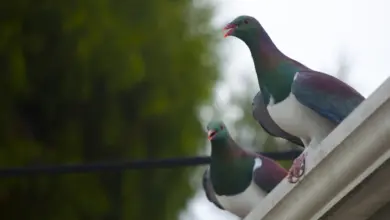Nuttal’s Woodpeckers
Nuttall’s Woodpecker Species account by Jeannine Miesle … Additional information added by Avianweb
Member of the Picidae Family: Woodpeckers … Sapsuckers … Flickers
Overview … Alternate (Global) Names
Distribution / Habitat
Description … Calls / Vocalizations
Breeding / Nesting … Diet / Feeding
A diminutive (smallish) woodpecker species, the Nuttall’s Woodpeckers (Picoides nuttallii) was named after naturalist Thomas Nuttall in 1843. The shy Nuttall is often hidden in foliage and may be heard before it is seen. It is found in oak woodlands on the west coast of California and is genetically similar to the Ladder-backed Woodpecker. The two species’ markings are very much alike, and they share some of the same land. They can be seen in trees from sea level to 1250 m, and occasionally they are viewed at heights of 2000 m.
The Nuttall’s Woodpecker is endemic to the California coastal area. Although their habitat is restricted, they are not considered globally threatened. In their territories, they are deemed fairly common. In some surveys, their population is estimated at over 100,000, but the Breeding Bird Atlas survey in California gives a rough estimate of closer to 200,000 to 300,000 birds across the entire inhabited range. Their populations are assumed to be generally stable at this time, and this species is fairly tolerant of human activity. It is therefore labeled “Least Concern.”
This species is considered to be of moderate conservation importance, primarily because of its limited range, low overall density, and its association with intact oak and riparian forests. Since it is a primary cavity nester, its excavations eventually support other forest-dwelling birds and animals.
In the northern California Coast Range lies the Audubon Mayacamas Mountains Sanctuary. This habitat is near Healdsburg in Sonoma County and protects the Nuttall’s Woodpecker along with many other species. Its 1,400 acres of oak woodland and mixed evergreen forest are considered by naturalists to be one of the finest examples of oak-savannah grassland and low-altitude conifer forest.
Distribution / Habitat
The Nuttall’s Woodpeckers is a year-round resident that can be found only in the geographic region extending from northern California south to Baja California, Mexico. The northern California range begins west of the southern Cascade Mountains and the Sierra Nevada. Some of these birds frequent the deserts along riparian corridors, and some vagrants can be seen throughout the deserts of south-central California. Occasionally, some reside in the Imperial Valley in southeast California, southwestern Oregon, and western Nevada.
This species is endemic to oak and mixed woodlands near water sources and has been known to inhabit conifer trees as well. The preferred habitat is the area that is arid to mesic (having a moderate supply of moisture) and those spaces containing scrub oaks and streamside foliage. Due to decreasing numbers of oak trees in the southern regions of their range (because of human encroachment), their limited range, and low population density, they will also inhabit deciduous trees near riparian sites as well as near canyons and chaparral (shrubland or heathland plant communities found in California and Baja peninsula). Canyon trees include sycamores, alders, cottonwoods, and bay trees which grow along streams lined with live oaks.
Ladder-back Woodpeckers also prefer the same ecological habitats, but the two species do not often interact; when in the same mountain range, the Nuttall’s will reside in the moister slopes facing west, and the Ladder-backed will occupy the drier, east-facing slopes. Parts of their ranges do overlap, so hybrids will occur, but those birds are rare. Nuttall’s biology has received almost no notice, so very little scientific knowledge has been discovered.
Description
Size
Nuttal’s Woodpeckers weigh from 30 to 45 g (1.1 to 1.6 oz), and their length ranges from 16 to 18 cm (6.3 to 7.1 in).
Plumage Details / Adults
This small, black, and white woodpecker is known for its beautifully marked black wings and white-barred tail feathers. The throat, breast, and belly are white with small amounts of black spotting on the sides of the breast and flanks. White nasal bristles at the cere highlight Nuttall’s black and white face, while the black forehead is bordered with white streaks on the sides of the head and white on the center of the crown. The scapular area of the upper back is solid black. Adult males display a striking red patch on the rear of the crown and upper nape.
Other Physical Details
The bill is short and black, while the legs and feet are grey.
Just as with most woodpeckers, the Nuttall’s has zygodactyl feet and rigid tail feathers which give it the necessary balance on trees.
Gender ID
The female is similar to the male, except that the forehead, crown, and nape are black with some white streaking, and she lacks the red patch on the crown.
Juvenile Description
The juvenile’s plumage is similar to the adult plumage, but duller and less distinct. Juveniles of both sexes have a red patch on the crown, but it is not as dark or as full as that of the adult male. Also, the coloring on the head is interspersed with white.
They will keep this plumage until August.
Similar Species
- The Downy Woodpecker can be identified by the pure white markings in the middle of the back and white underparts. There is no white streaking on the crown, and the black eye and malar stripes do not join.
- The Ladder-backed Woodpecker has a paler plumage. There is more white on the back. The white stripes on the face are larger. It looks like it has a white face with black stripes, compared to the Nuttall’s which looks like it has a black face with white stripes. There is a barring on the outer tail feathers (rather than spots). The red cap on the male’s head is more extensive – extending up to the forehead.
Diet / Feeding
The Nuttall’s Woodpeckers dines mainly on the insects and arthropods it finds on oak trees. It will forage for wood borers and their larvae, caterpillars, click beetles, ants, bugs, and a variety of berry seeds and other fruits; even though it eats nuts, it rarely eats the fruit of the oak–acorns. They also feed on sap from sap holes created by red-breasted sapsuckers in birch and willow and on poison oak seeds. They have even been known to catch flies mid-air!
They forage in much the same way as other woodpeckers do; the techniques used most often are tapping, gleaning, prying, and probing into crevices and underneath the bark of trees to locate prey. They will forage in the dense foliage of trees, including the yucca and mesquite. As they creep diagonally along the trunk, they often fly to large branches, hanging upside down from the undersides of those branches, resembling a large nuthatch. When foraging, males tend to work on the trunk and larger branches, while females glean from the smaller branches
Breeding / Nesting
Nuttall’s Woodpeckers begin pairing up in late January to March, and the pair will begin excavating a new nest preferably inside snags or dead willow, cottonwood, sycamore, oak, or alder trees near waterways. Nests can also be found in canyons. They usually measure 1.5 in (4 cm) in diameter and 7-10 in ((18-25 cm) deep. These nests can be located between 2.5 to 60 feet (1-20 meters) above ground.
Three to six white eggs are laid between late April and mid-June, and the monogamous pair shares the parental duties. As is the case with most woodpecker species, they take turns incubating the eggs—the female during the day and the male at night. After 14 days, the altricial chicks hatch, and after another 14-15 days, they can fly. For two more weeks, the fledglings are cared for by their parents who protect them and the nest from threats by Ladder-backed and Downy Woodpeckers. The Downy is the most challenging as it nests in similar cavities.
The parents will only produce one clutch per year.
Calls / Vocalizations / Sounds
Vocalizations performed by Nuttall’s woodpecker consist of calls and drumming. They are:
The call note –This is sung between mated pairs to communicate their location to each other. It is a short, rolling “prrt” or “pitit” that may be followed by a longer trill, “prrt prrt prrrrrrrrrrrrr.”
The double call – It has the same purpose as the call note, but it is also used as a low-threat alarm call. Both contact calls consist of a sharp, rising, two- or three-note “pitik” and occasionally a single-note “pik.” This sounds similar to the call of the Hairy Woodpecker.The rattle call – This call establishes territories during foraging; it is a level and steady “pitikikik.”
Kweek call – The male and female communicate this sound before and during copulation. It is given in a forceful “kweek, kweek, kweek” series.
Both sexes engage in drumming; it is composed of long, slow, steady rolls which average about 20 taps a second. The Nuttall’s drumming is considerably longer and faster than the Downy’s.
Alternate (Global) Names
Chinese: 加州啄木鸟 … Czech: Strakapoud kalifornský … Danish: Californisk Flagspætte … Dutch: Nutalls Specht, Nutall-specht, Nuttalls Specht … Estonian: kalifornia kirjurähn … Finnish: Kaliforniantikka … French: Pic de Nuttall … German: Nuttallspecht, Nuttall-Specht … Italian: Picchio di Nuttall … Japanese: shiroharashimaakagera … Norwegian: Kaliforniaspett … Polish: Dzieciol kalifornijski … Russian: Нуталлов дятел … Slovak: datel Nuttallov, ďateľ Nuttallov … Spanish: Carpinterillo / Carpintero Californiano, Carpintero de Nuttall, Pico de Nuttall … Swedish: Chaparralspett
Other Web Resources
Please Note: The articles or images on this page are the sole property of the authors or photographers. Please contact them directly with respect to any copyright or licensing questions. Thank you.
The Avianweb strives to maintain accurate and up-to-date information; however, mistakes do happen. If you would like to correct or update any of the information, please send us an e-mail. THANK YOU!
earthlife.net:© Copyright Policies| Disclaimers | We respect your privacy: Site Privacy Policy | For questions or comments, please contact Website Administrator
Any content published on this site is commentary or opinion and is protected under Free Speech. It is only provided for educational and entertainment purposes and is in no way intended as a substitute for professional advice. Avianweb assumes no responsibility for the use or misuse of any of the published material. Your use of this website indicates your agreement to these terms.
Index of Parrot Species
Index of Bird Species
Popular Bird Species
- Bee-eaters
- Birds of Prey
- Bluebirds
- Cardinals / Red Birds
- Cranes
- Chicken (Backyard)
- Crows
- Doves
- Ducks
- Figbirds
- Geese
- Hummingbirds
Interesting Facts
The Smallest Bird Alive …
Birds that can hibernate for months: the Common Poorwill
The Oldest Parrot:
- Blue & Gold Macaw
The ONLY Birds that Can Fly BACKWARDS …
The largest flying parrot species is …
- The Hyacinthine Macaw
The World’s Rarest Wild Parrot
- Spix’s Macaw
The parrots that build “bird condominiums”
- The Quaker Parrot
The Most Common Hawk in North America
The Eurasian Eagle Owl is the World’s Largest Owl
The record holder for speaking most words:
- Budgie (with over 1,700 words)
The Smartest Birds Alive?
- The birds that go fishing with breadcrumbs!
The largest wild goose ever recorded
(adsbygoogle = window.adsbygoogle || []).push({});
- Home
- Parrots
- Breeding
- Wild Birds
- Shop
- Contact / Uploads





